As more people become aware of indoor air quality, the sales of air purifiers have soared. Some homeowners find these machines aren’t a great fit. They can be bulky, noisy and increase the overall power consumption. How can you improve indoor air quality while avoiding these pitfalls? Houseplants can be a fantastic option! Whether they prefer sunny spots or shade, many plants pull double-duty as decorative objects and air purifiers.
Selecting the Right Plant for the Right Spot
When it comes to houseplants, the first and most important consideration is: sun or shade? Be sure to survey your home well before selecting your plants. Different areas of your home will receive different levels of sunlight depending on the amount of natural light available. Picking the right plant can make a huge difference in your plant’s health and function.
Be Aware of Special Concerns for Pets
While they’re all beautiful, not all houseplants are suitable for homes that have pets. Some plants are toxic if ingested. Asparagus fern, aloe, Peace Lily, Snake Plant, and Sago Palm are all popular choices that can be toxic to your pets. If you choose to have these plants, take extra care to place them out of your furry friend’s reach. While most aren’t fatal, your pet could end up suffering mouth pain, nausea, and gastrointestinal distress if they consume them.
Don’t Forget the Humidity Factor
Some plants can work to reduce humidity in the air, making them ideal for bathrooms and basements. These humid spaces can easily overwhelm plants that prefer drier environments. Before purchasing your houseplants, check to see if it’s compatible with the ambient humidity in the area you want to place them. Pothos, aloes, and ferns do well in high-humidity environments. There’s great news for Orchid lovers, too! These notoriously difficult-to-care-for beauties find their perfect homes on a tub surround or bathroom counter.
How Do Houseplants Clean the Air?
Organic compounds, or VOCs, are common indoor pollutants. Released into the air from fabric and stone surfaces, cleaning supplies, and other products, VOCs can build up in enclosed areas. In addition to VOCs, enclosed spaces can have higher levels of carbon dioxide and other waste gases. The purifying effects exhibited by some plants can be traced to a 1989 study conducted by NASA. While the findings have been re-studied and debated since release, the fact that houseplants do offer some air-purifying benefits remains undebated. As plants require carbon dioxide to live, the process of photosynthesis naturally reduces carbon dioxide in the environment. NASA’s study also showed that plant roots may absorb decayed radon byproducts from the air, reducing the amount in the air around us. Further research showed a positive effect on purifying other common pollutants. Which plants showed the most air-cleaning properties?
Dracaena (Dracaena fragrans)

Big, bold, and beautiful is the hallmark of Dracaena.
©Sataporn Kumsuka/ via Getty Images
If you want a houseplant that will take center stage without demanding much care from you, Dracaena fits the bill. Young Dracaena grows in a mounded pattern, making it perfect for counters, tables, and other surfaces. As they age, the plants develop a tree-like formation. While this variety doesn’t flower, the 120 different subtypes all have dynamic leaf patterns and coloring. Dracaena prefers mid to low-level lighting and only requires watering when the soil begins to dry. Dracaena reduces formaldehyde, xylene, toluene, benzene, and trichloroethylene from indoor air samples.
Spider Plant (Chlorophytum comosum)

Spider plants come in over 100 different varieties, so you’ll easily find one that suits your decor.
©iStock.com/Bogdan Kurylo
This fun, spiky, flowering pom-pom of a plant packs the double benefit of being easy to care for as it removes formaldehyde and xylene from the air. You can choose to grow these plants in standing pots or hanging baskets. Spider plants prefer moderate to bright sunlight with moderately damp soil. During the spring and summer, once a week watering should be sufficient. For winter months, spider plants can go a little longer between waterings.
Golden Pothos (Epipremnum aureum)
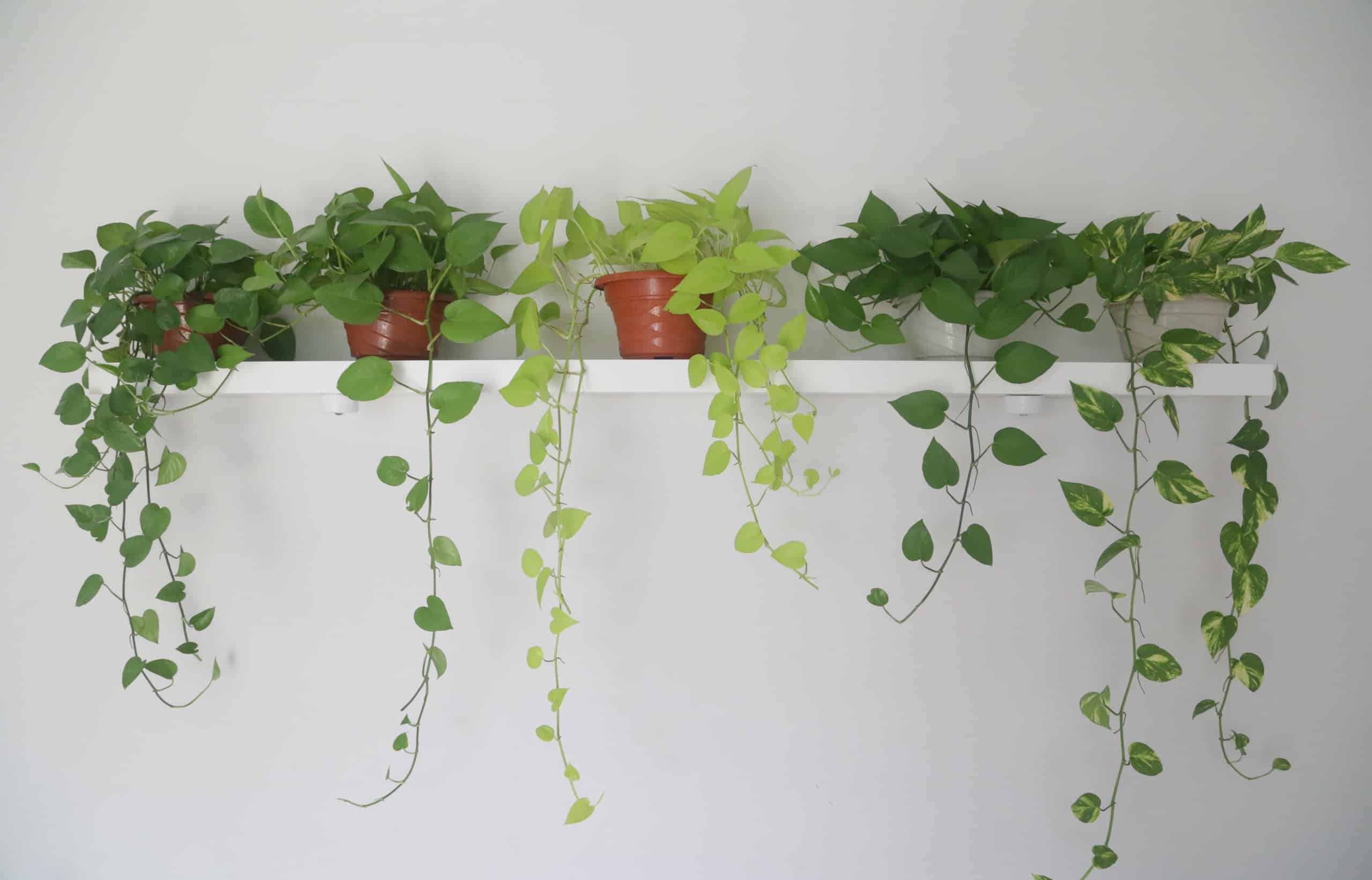
Pothos can be grouped to create stunning displays.
©Amir Hafidz/Shutterstock.com
When it comes to Pothos care, temperature is key. This plant is sensitive to variations and cold, so if you live in an area with colder winters, avoid placing this plant by windows or drafty areas. Pothos prefer bright, indirect sunlight, as direct sunlight can ‘burn’ the leaves. Pothos varieties range from solid-color to variegated leaf patterns and display all shades of green and gold. The trailing habit of the plant makes it ideal for pots, hanging, or growing on a trellis. Pothos has been shown to reduce formaldehyde, xylene, toluene, benzene, and carbon monoxide.
Bamboo Palms (Chamaedorea seifrizii)
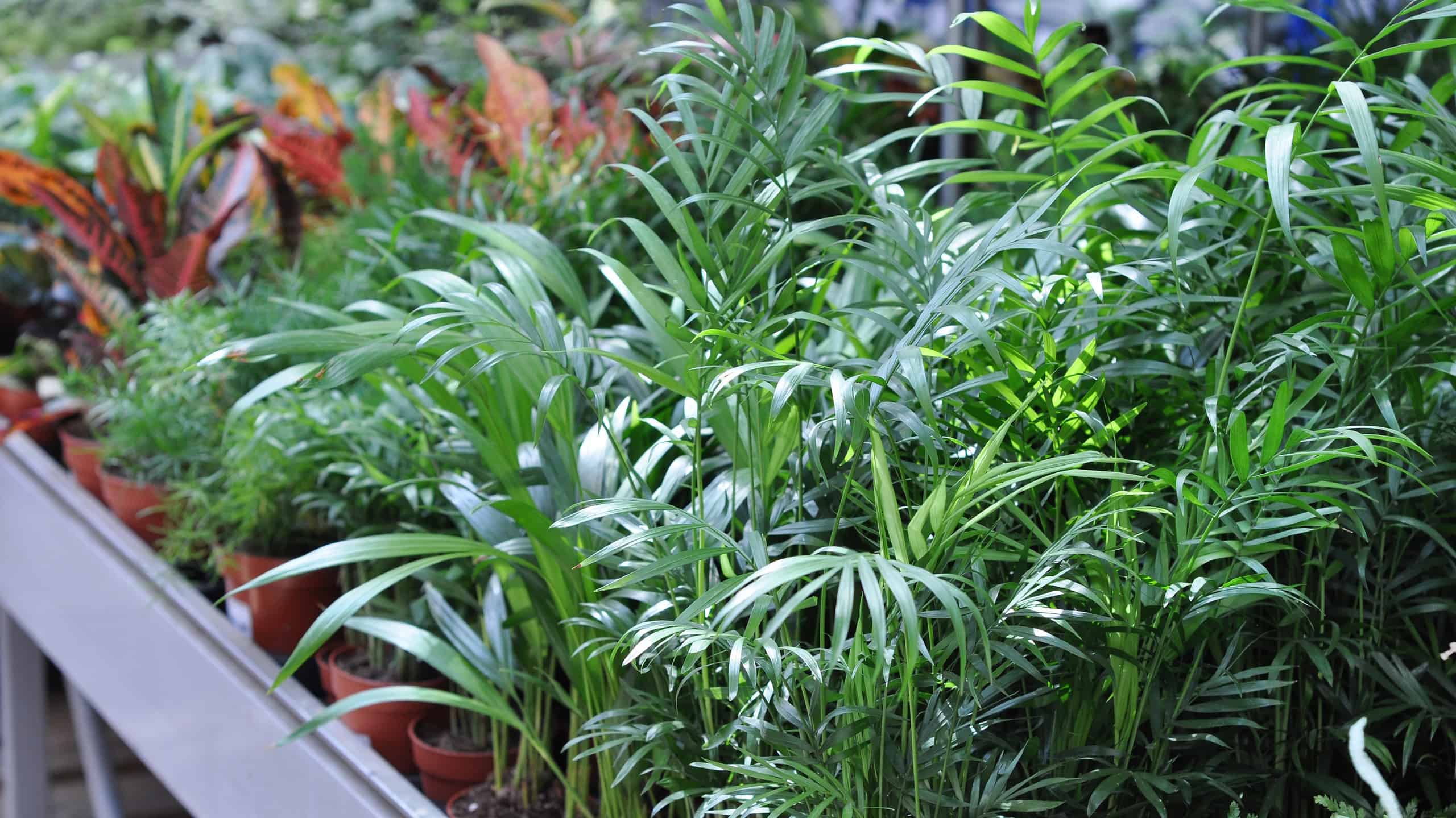
Bamboo Palm has the unique attribute of transferring moisture into the air, making it perfect for bedrooms or dry areas of your home.
©Oksana Lyskova/Shutterstock.com
While Bamboo Palm will eventually grow to a tall plant, the growth rate of this plant is slow enough that it’s suitable as a houseplant. Bamboo Palms prefer bright but indirect sunlight. While you should only water the plant when the soil is dry, Bamboo Palms benefit from a weekly misting of its fronds with water. These plants have been shown to reduce formaldehyde, benzene, carbon monoxide, xylene, and chloroform in the air.
English Ivy (Hedera helix)
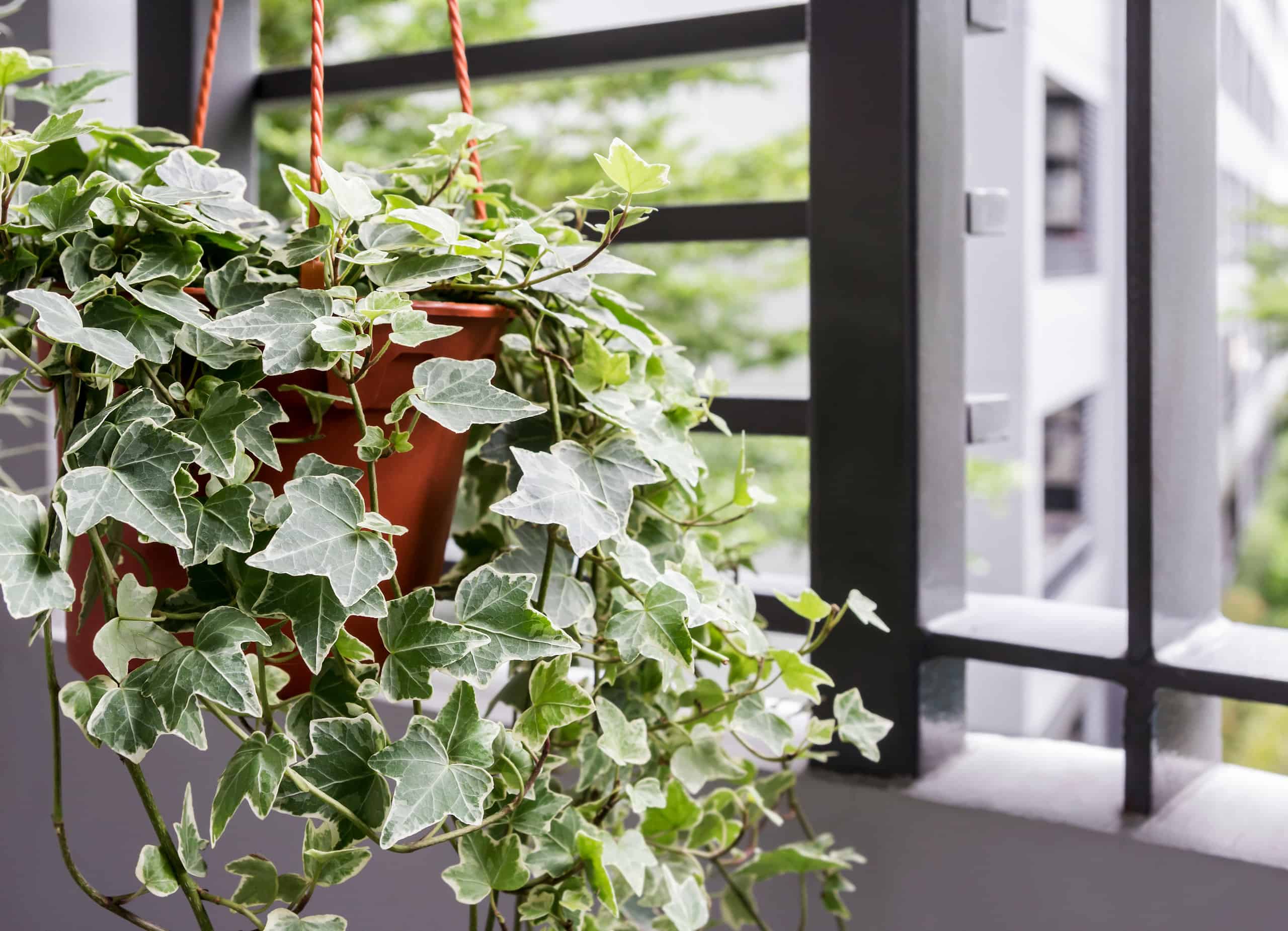
English Ivy, often considered a nuisance as an outdoor plant, is finding new life as an air-purifying houseplant.
©ArtBackground/Shutterstock.com
This plant is becoming a houseplant superstar by combining a compact and neat growth pattern with the ability to remove toxins such as benzene, carbon monoxide, formaldehyde, and trichloroethylene. Ivy is tolerant of nearly any light level, which allows this plant to grow even in shady areas of your home. English Ivy is a little pickier about water, however, so be sure that the soil is kept moist but not soggy for the best results.
Peace Lily (Spathiphyllum)
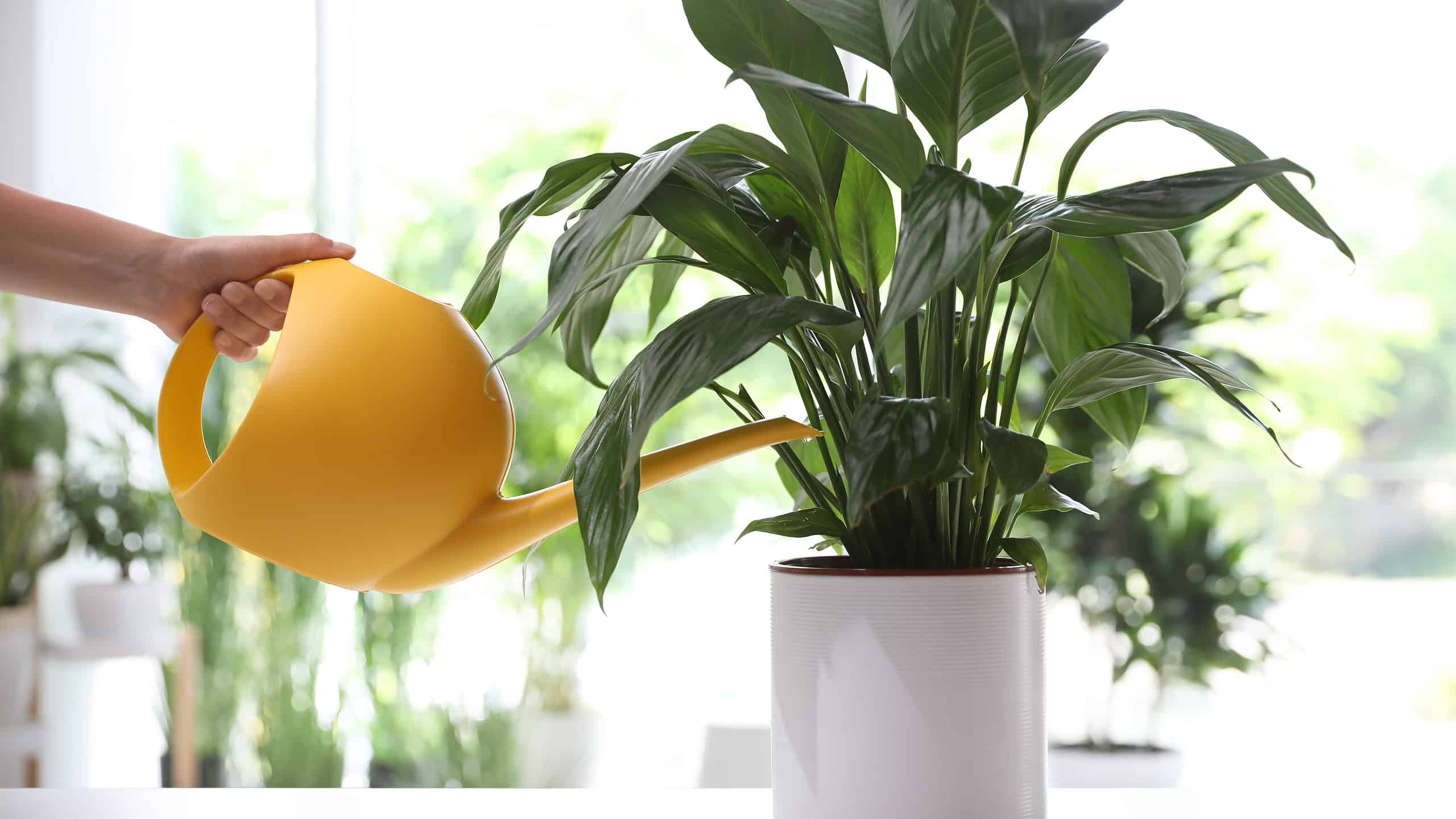
Peace Lillies are a shade-tolerant plant with large, deep green foliage and beautiful blooms.
©iStock.com/Liudmila Chernetska
While the glossy green leaves and creamy white flowers of the Peace Lily have earned this plant a spot as a favored houseplant for years, research has shown that the plant can reduce formaldehyde, benzene, trichloroethylene, xylene, and ammonia in the atmosphere. This quality makes Peace Lillies not only beautiful but also beneficial. Keep the soil of this plant moist but not wet. Peace Lily prefers diffused, indirect sunlight. Outside of watering, your lily will benefit from regular dusting of its foliage. This plant is toxic if ingested, so be sure to keep it where curious pets can’t chew on the leaves.
Rubber Plant (Ficus Elastic)
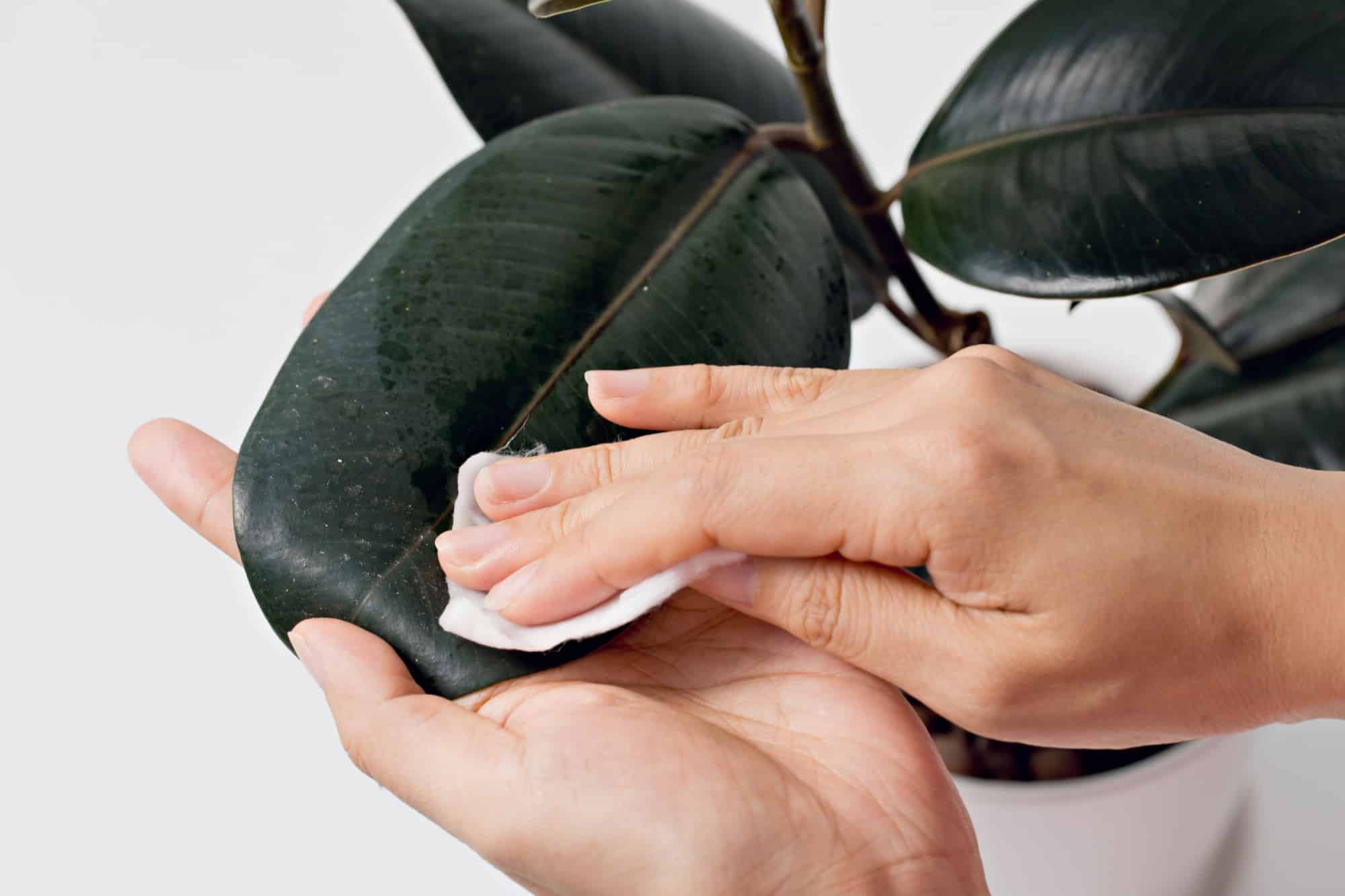
The structured, beautiful leaves of the Rubber plant make it a show-stopper.
©AngieYeoh/Shutterstock.com
Rubber Plants are the perfect example of a minimal-care houseplant. They prefer bright, indirect sunlight, moist soil and are capable of thriving in high-humidity areas such as bathrooms. They’ve been shown to remove carbon monoxide, formaldehyde, and trichloroethylene from indoor air. The structured growing habitat will require pruning to maintain its shape, however, this is an infrequent task as these plants are slower-growing. The roots on some varieties will grow upwards, entwining the trunks. This is a normal growing habit for Rubber Trees, with many owners carefully pruning and training these roots to increase the plant’s visual appeal.
Chrysanthemums (Chrysanthemum indicum)

Chrysanthemums provide cheerful, colorful blooms that can improve your indoor air quality.
©Helen Sushitskaya/Shutterstock.com
While these lovely little plants only bloom for about six weeks of the year, they’re one of the best plants for purifying indoor air. Chrysanthemums remove ammonia, benzene, toluene, formaldehyde, trichloroethylene, and xylene. After the flowers wilt, the woody stems will die down a the end of the growing season. You can store the pots in your garage, being sure to water them when the soil becomes dry. In the spring, replace your pots in a bright, sunny area of your home. With a dose of fertilizer, your Chrysanthemums will provide yet another year of gorgeous, sunny blooms.
Summary Table of Plants to Purify Indoor Air
| Plant | Toxins Removed |
| Dracaena | Formaldehyde, Xylene, Toluene, Benzene, and Trichloroethylene. |
| Spider plants | Formaldehyde and Xylene |
| Golden Pothos | Formaldehyde, Xylene, Toluene, Benzene, and Carbon monoxide |
| Bamboo palms | Formaldehyde, Benzene, Carbon monoxide, Xylene and Chloroform |
| English Ivy | Benzene, Carbon monoxide, Formaldehyde, and Trichloroethylene |
| Peace Lily | Formaldehyde, Benzene, Trichloroethylene, Xylene, and Ammonia |
| Rubber Plant | Carbon monoxide, Formaldehyde, and Trichloroethylene |
| Chrysanthemums | Ammonia, Benzene, Toluene, Formaldehyde, Trichloroethylene and Xylene |
The photo featured at the top of this post is © CatInColour from CatInColour, yaoinlove from Getty Images/ via Canva.com
Thank you for reading! Have some feedback for us? Contact the AZ Animals editorial team.







